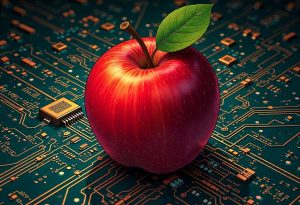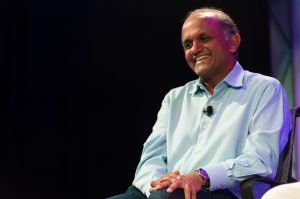The Future of the Smartphone Market: Getting Smarter
![]() Have you noticed how feature phones are becoming obsolete as people turn to smartphones? It seems everything today revolves around smartphones, but these consumer-centric devices impact our personal lives and the global economy much more than we think.
Have you noticed how feature phones are becoming obsolete as people turn to smartphones? It seems everything today revolves around smartphones, but these consumer-centric devices impact our personal lives and the global economy much more than we think.
What is a smartphone?
According to the newest report from Juniper Research, a smartphone is “a handset which can download and install applications via a cellular network which are native to their operating system, with a dedicated storefront for distributing these applications to all users of the OS.
So dissecting Juniper’s definition, a smartphone is not simply defined by QWERTY keyboards, a touch-screen, access to the web or e-mail and download applications, as some of these can be found in some feature phones.
Technology trends
Aside from the definition of a smartphone, Juniper also tackled the rising trend in smartphone features, namely NFC, 3D and Biometrics, which sets them far apart from feature phones.
Most manufacturers these days want their products to have that “wow factor”. More devices are putting NFC chips in their devices to accommodate the growing trend of cashless/cardless transactions. NFC chips allow users to pay for items just by tapping their device on NFC readers or stations. But this issue gives rise to more security issues since all your information – credit card number, e-mail, password, etc. – can be exposed by tapping your device in unsecured stations. So, manufacturers are looking into incorporating biometric scanners on smartphones for added security. And with the advent of of almost every movie coming out in 3D and 2D, smartphone makers want the same technology be experienced on their devices. One or all three features appearing on smartphones just make consumers drool with desire.
Smartphone market
Juniper categorized the handset market into: Premium smartphones costing $400 and above, Standard smartphones priced somewhere between $151-$399, Economy handsets priced $26-$150, and Ultra-low-cost handsets priced below $25.
The buying power of consumers is influenced by the price of the device. Juniper stated in their report that in 2010, more people bought phones priced $150 or less. Right now, more people are buying cheaper devices but with all the features manufacturers are including in today’s devices, it’s highly unlikely to find handsets priced below $25. Juniper projected that by 2016, the smartphone market will be split into three categories, Premium $400+, Standard $151-$399, and Economy $26-$150, with Standard smartphones being the most abundant type purchased by consumers.
According to the latest International Data Corporation (IDC) Worldwide Quarterly Mobile Phone Tracker report, the worldwide smartphone market grew 42.5% year over year in 1Q12 while the worldwide mobile phone market declined 1.5% year over year in 1Q12 – shipping only 398.4 million units in 1Q12 compared to 404.3 million units in the first quarter of 2011. Vendors shipped 144.9 million smartphones in 1Q12 compared to 101.7 million units in 1Q11. The 42.5% year-over-year growth was 1% higher than IDC’s forecast of 41.5% for the quarter, and lower than the 57.4% growth in the fourth quarter of 2011. The IDC report just shows that more people are shifting to smartphones.
Samsung is now the world’s largest smartphone vendor, shipping 44.5 million units, taking the position from Nokia, which they held for 14 years. They even managed to overtake Apple, which only shipped 35.1 million smartphones worldwide. The huge increase in Samsung’s shipment is attributed to the fact that more people buy their Galaxy products such as the Galaxy SII, Y and Note. Nokia is known for making feature phones, and being dethroned just means that people are tired of feature phones.
A message from John Furrier, co-founder of SiliconANGLE:
Your vote of support is important to us and it helps us keep the content FREE.
One click below supports our mission to provide free, deep, and relevant content.
Join our community on YouTube
Join the community that includes more than 15,000 #CubeAlumni experts, including Amazon.com CEO Andy Jassy, Dell Technologies founder and CEO Michael Dell, Intel CEO Pat Gelsinger, and many more luminaries and experts.
THANK YOU









